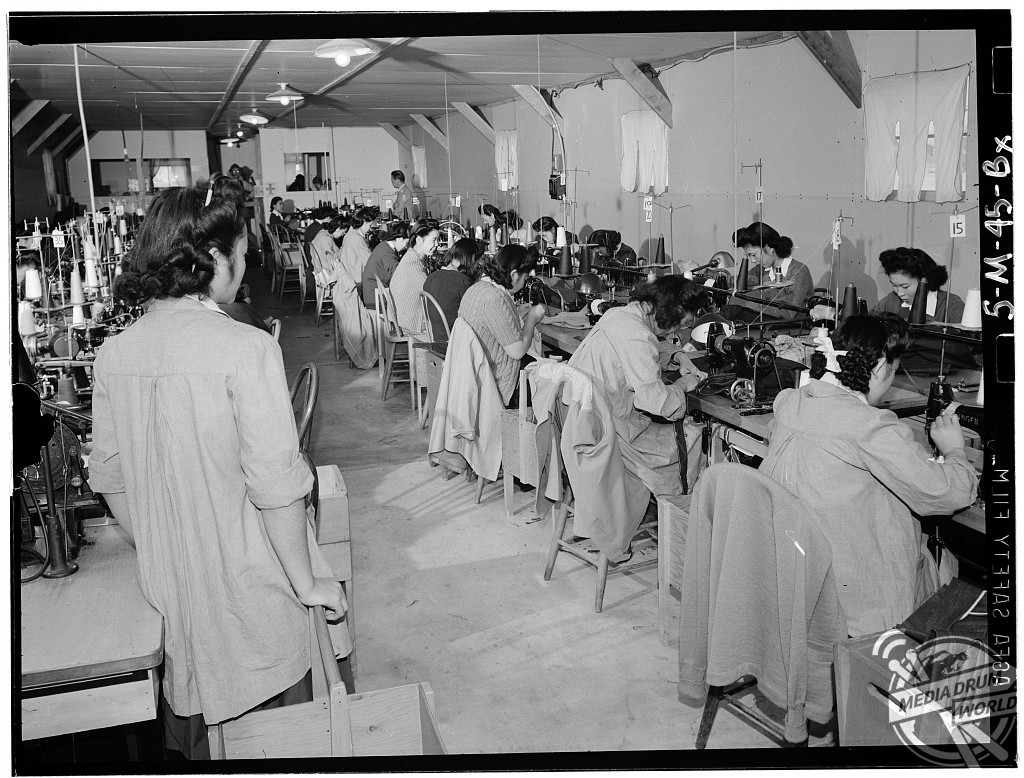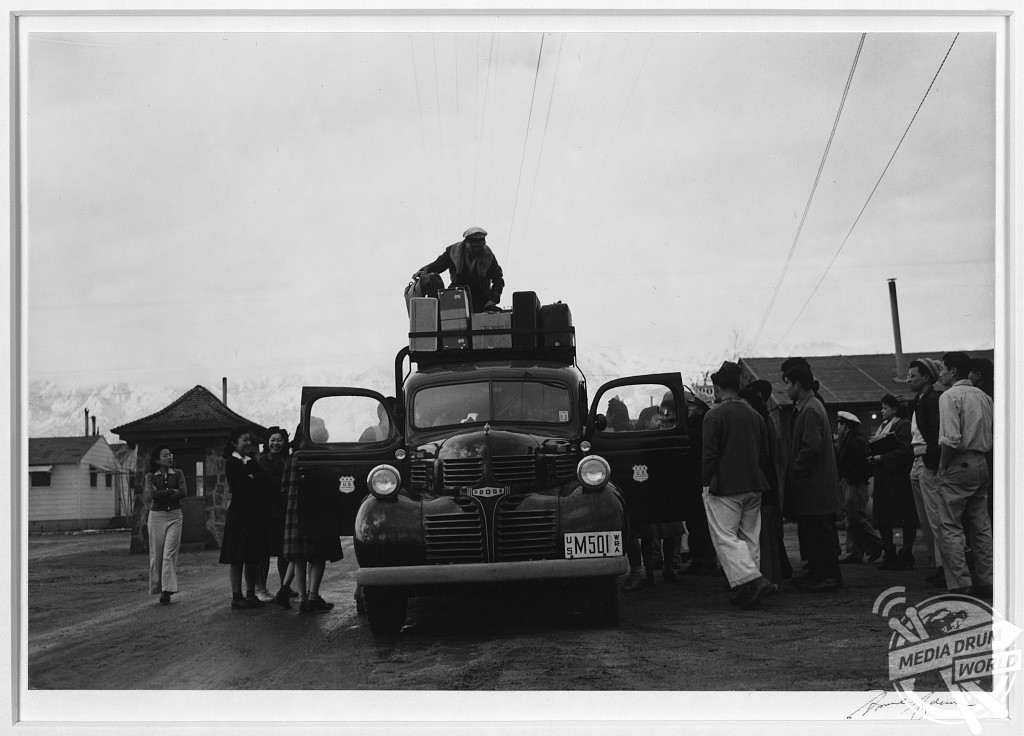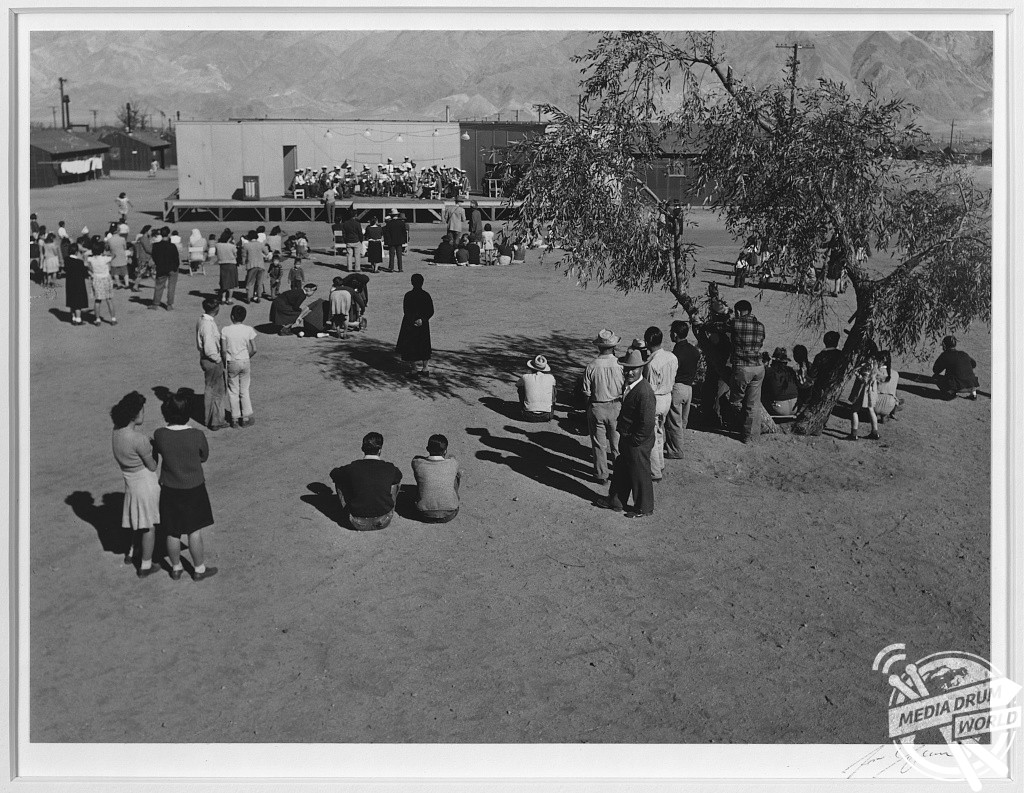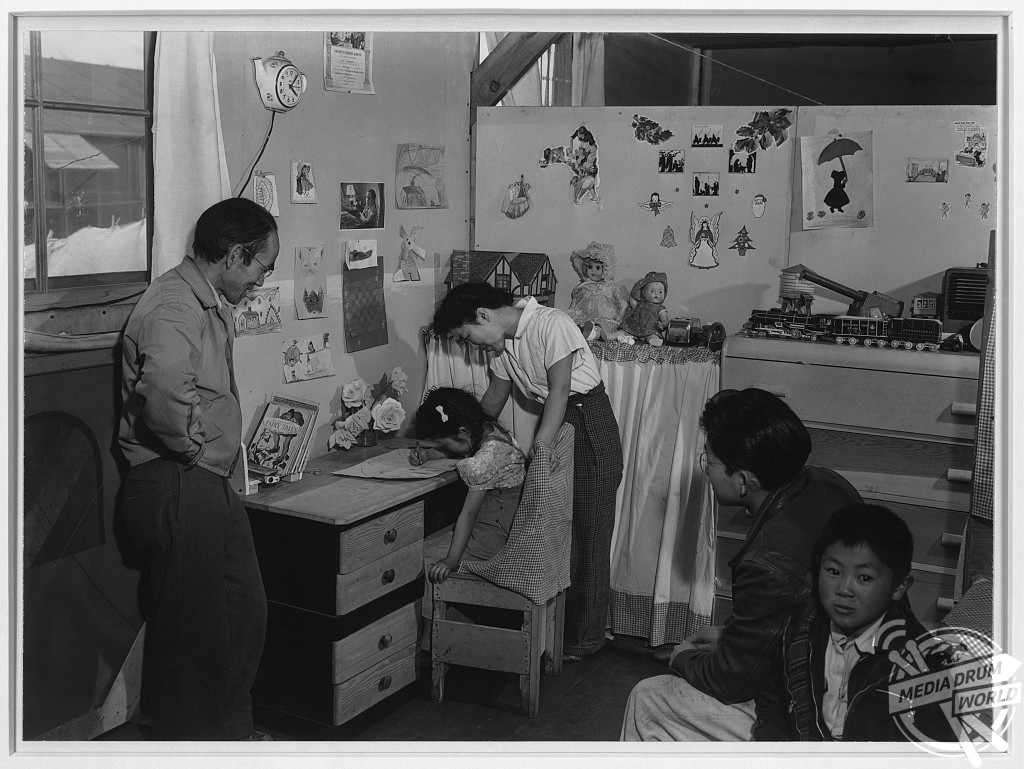By Liana Jacob
COMPELLING black and white photos show how the Japanese-American community was forcefully relocated and held in camps in California and held for over half a year after the US war with Japan was ended.

Known as the Manzanar Relocation, the eye-opening photographs show life of Japanese-Americans during the WW2, which occurred after the Japanese attack on the US base, Pearl Harbour in December 1941.
The pictures by the USA’s most well-respected photographer of the time, Ansel Adams, show groups of Japanese-Americans walking out of Buddhist churches and attending Sunday School classes, portraying their religious attachments.

Other vintage portraits display nurses looking after their patients and abandoned children looking bereft as they are left in orphanages.
Despite being forcibly relocated, the photographs depict a lighter side to the war with images of a large crowd surrounding a band playing at the Manzanar Relocation Center.

Photographer and environmentalist, Ansel Adams took the images in 1943. In a letter written to Federal archivists in 1965 he described his work.
“The purpose of my work was to show how these people, suffering under a great injustice, and loss of property, businesses and professions, had overcome the sense of defeat and despair by building for themselves a vital community in an arid (but magnificent) environment,” he said.
“All in all, I think this Manzanar Collection is an important historical document.”

Over 110,000 Japanese-Americans were forcibly removed during World War II from 1942 to March 1946, seven months after the war with Japan had finished.
Adams’ other famous work was made up of black and white landscape photographs of the American West, especially Yosemite National Park, which have been broadly distributed on calendars, posters, books and the internet.
He described his life as “coloured and modulated by the great earth”.








